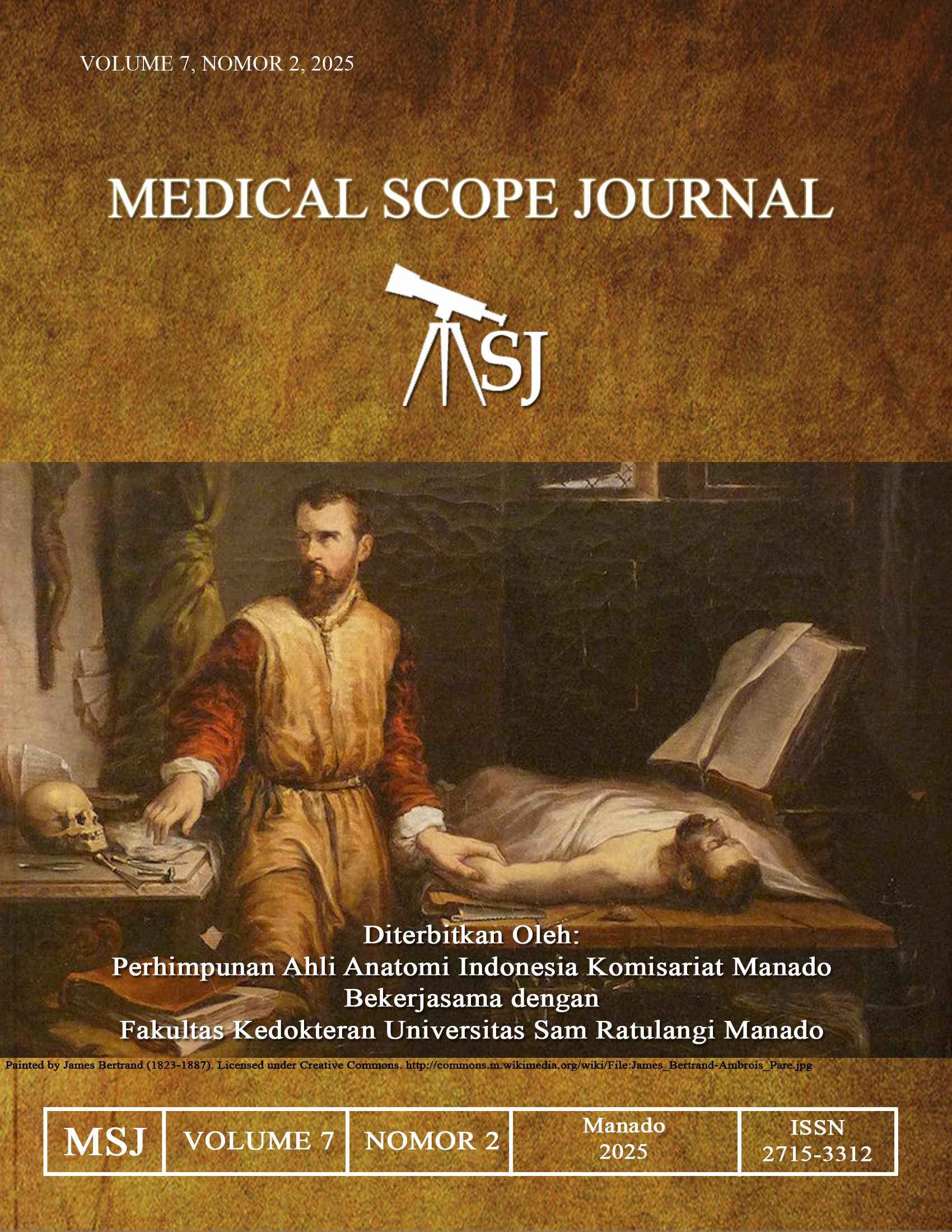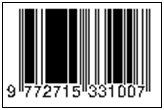Penetrating Head Injury by a Key: A Case Report
DOI:
https://doi.org/10.35790/msj.v7i2.59224Abstract
Abstract: Penetrating head injury is defined as head trauma caused by an object that penetrates the skull and the underlying duramater. We reported a 22-year-old man who came to the hospital with a motorcycle key stuck into the back of his head after a fight with his friend approximately one hour before admission. The patient was fully conscious. History of projectile vomiting, and seizures were denied, and there were no other neurological deficits. Blindly removing the key can damage the neural tissue and can cause secondary injury to the brain and surrounding blood vessels. The primary goal of treatment for patients with suspected traumatic brain injury is to prevent secondary brain injury and infection. The removal of the object safely, debridement of the damaged parenchyma, removal of the hematoma, and closure of the injured dura and skin are the main goals of surgical treatment for penetrating head injuries. In this case, motor key evacuation was performed followed by craniotomy and debridement. The prognosis was good, and there was no neurological deficit. In conclusion, complete and adequate care is essential for patients with penetrating brain injuries. The strategy for treating these injuries is primarily surgery with the aim of preventing secondary brain injury and infection. According to existing research, antibiotics should be given for an indefinite period after surgery.
Keywords: penetrating head injury; motorcycle key
References
Yarandi KK, Jelodar S, Khalatbari MR, Rasras S, Ilkhchi RB, Amirjamshidi A. Stab wounds to the head; case series, review of literature, and proposed management algorithm. Asian J Neurosurg. 2018;13(3):754–9. Doi: 10.4103/ajns.AJNS_29_18
Fahde Y, Laghmari M, Skoumi M. Penetrating head trauma: 03 rare cases and literature review. Pan Afr Med J. 2017;28:305-13. Doi: 10.11604/pamj.2017.28.305.10376
Abdelhameid AK, Saro A. Non-missile penetrating brain injuries: cases registry in Sohag University Hospital. Egyptian Journal of Neurosurgery. 2019;34:24-35. Doi: 10.1186/s41984-019-0048-5
Van Wyck DW, Grant GA, Laskowitz DT. penetrating traumatic brain injury: a review of current evaluation and management concepts. Journal of Neurology & Neurophysiology. 2015;6(6):336-43. Doi: 10.4172/2155-9562.1000336
Exadaktylos AK, Stettbacher A, Bautz PC. The value of protocol-driven CT scanning in stab wounds to the head. Am J Emerg Med. 2002;20(4):295–7. Doi:10.1053/ajem.2002.33784
Hendry S, Brasel K, Stewart RM. Head trauma. Advanced Trauma Life Support (ATLS). 2018;10:102-25.
De Holanda LF, Pereira JA, Holanda RR, Neto JT, De Holanda CVM, Filho MG, et al. Neurosurgical management of nonmissile penetrating cranial lesions. World Neurosurg. 2016;90:420-9. Doi: 10.1016/j.wneu.2016.03.015
Kazim SF, Shamim MS, Tahir MZ, Enam SA, Waheed S. Management of penetrating brain injury. Journal of Emergencies, Trauma, Shock. 2011;4(3):395-402. Doi: 10.4103/0974-2700.83871
Asadullah, Harmawan EW, Prastikarunia R, Putra GH, Kustono, H, Utama AS, et al. Management of penetrating brain injury: a case report. Indonesian Journal of Neurosurgery. 2020;3(3):74-9. Doi:10.15562/ijn.v3i3.76
Esposito DP, Walker JB. Contemporary management of penetrating brain injury. Neurosurg Q. 2009;9(4): 249-54. Doi: 10.1097/WNQ.0b013e3181bd1d53
Shi J, Mao Y, Cao J, Dong B. Management of screwdriver-induced penetrating brain injury: a case report. BMC Surgery. 2017;17(1):3-6. Doi: 10.1186/s12893-016-0195-5
Zyck S, Toshkezi G, Krishnamurthy S, Carter DA, Siddiqui A, Hazama A, et al. Treatment of penetrating nonmissile traumatic brain injury. Case series and review of the literature. World Neurosurg. 2016;91:297‑307. Doi: 10.1016/j.wneu.2016.04.012
Downloads
Published
How to Cite
Issue
Section
License
Copyright (c) 2025 Maximillian C. Oley, Eko Prasetyo, Ferdinan Tjungkagi, Yovanka N. Manuhutu, Edwin H. Sitorus

This work is licensed under a Creative Commons Attribution-NonCommercial 4.0 International License.
COPYRIGHT
Authors who publish with this journal agree to the following terms:
Authors hold their copyright and grant this journal the privilege of first publication, with the work simultaneously licensed under a Creative Commons Attribution License that permits others to impart the work with an acknowledgment of the work's origin and initial publication by this journal.
Authors can enter into separate or additional contractual arrangements for the non-exclusive distribution of the journal's published version of the work (for example, post it to an institutional repository or publish it in a book), with an acknowledgment of its underlying publication in this journal.
Authors are permitted and encouraged to post their work online (for example, in institutional repositories or on their website) as it can lead to productive exchanges, as well as earlier and greater citation of the published work (See The Effect of Open Access).










